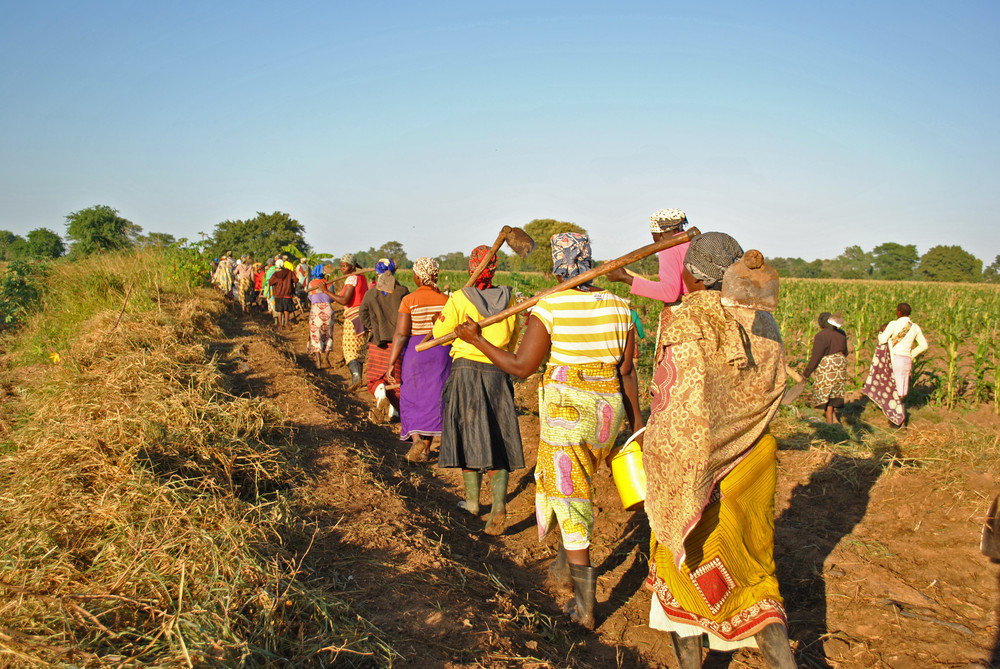 |
| Pro-poor Value Chain Development Project in the Maputo and Limpopo Corridors of Mozambique. ©IFAD/Clarissa Baldin |
Stephen Twomlow is IFAD’s Regional Climate and Environmental Specialist for East and Southern Africa. He is based in Nairobi, Kenya where he provides technical support to ensure IFAD’s regional portfolio is environmentally sustainable and climate-smart - assisting in project and country strategy design towards integrating climate and environment risks and opportunities (such as climate adaptation) into early identification and design of projects and country strategies. He’s currently supporting programmatic activities in Comoros, Eritrea, Ethiopia, Kenya, Lesotho, Madagascar, Malawi, Mozambique, Rwanda, Swaziland, Tanzania and Uganda.
What countries or sub-region in East and Southern Africa do you think will be negatively affected by climate change?
Southern Africa will experience the worst impacts in the region. There you have arid and semi-arid areas that traverse the borders of South Africa, Zimbabwe, Botswana and Mozambique. The situation of water scarcity is expected to become more dire, and could surpass the threshold of what smallholder farmers can tolerate when it comes to the water needed for agricultural production.
In general, do you think that Governments in the East and Southern Africa are finally realizing the importance of the issue?
At the moment I would say governments are paying lip service, but not doing anything concrete to stop the impacts of climate change. With most governments constrained by tight budgets, there is hardly any impetus to spend money on long term environment and climate issues. But I should qualify this by saying there is also a gradual realization that something needs to change.
Do you think there is any resistance in the East and Southern Africa (ESA) division to addressing climate risks in IFAD-funded projects?
No, I think we have come a long way on this. Most people whom I’ve worked with are on board. The challenge I see is getting colleagues to articulate the situation, by doing the proper vulnerability assessments and using the right language when talking about climate risks. In addition, when doing project designs it is important to understand that climate change is playing out over longer time horizons, therefore the project activities need to be sustainable in order to realize adaptation in the long-term.
Do you think there still is some resistance from the beneficiaries to adopt climate resilient practices?
Certainly, as many people cannot access funds without strings attached. It is up to us to show that adaptation to climate change is not an economic burden, but brings all sorts of opportunities such as linking up to value chains, learning more efficient techniques or avoiding crop losses. One important point is that climate funds should engage with communities when taking stock of the baseline environmental conditions; this process allows them to confront issues that they would otherwise simply ignore.
What are the main environmental problems that you find endemic in different project areas?
Two of the most common environmental problems are deforestation for charcoal production and lack of sustainable soil fertility management. On the latter, there is a need to think about a new paradigm that aims at improved plant nutrition for greater drought tolerance. If we feed the plant to grow the roots than it is more likely to survive dry periods.
What new IFAD-funded projects are coming in 2014 and what are their main objectives?
There are two projects funded by the Adaptation for Smallholder Agriculture Programme (ASAP) that I have been closely involved with. The first is the Climate Resilient Post-Harvest and Agribusiness support project (PASP) in Rwanda. This project will address the post-harvest sector of the CIP (crop intensification programme) crops and dairy to demonstrate pro-poor approaches in post-harvest activities under increasing climatic uncertainty. Second, there is the Wool and Mohair Programme in Lesotho that seeks to provide economic and climate resilience to the poor, food insecure, climate vulnerable livestock producers in the Mountain and Foothill Regions of the country.